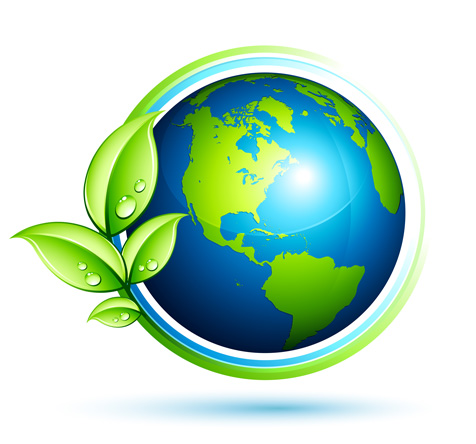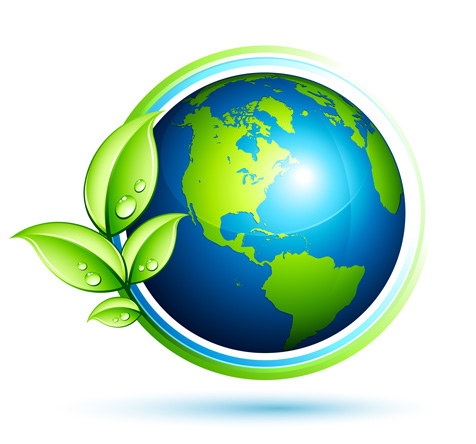To coincide with the Sustainability special in the current issue of SPA AUSTRALASIA, here are some additional ways you can reduce your environmental impact and save money.
Going Green
Discover how to make your spa a healthier place for your clients and employees, as well as the environment.
What does it mean to be green?
That may not be an easy question to answer when words such as ‘organic,’ ‘eco-friendly,’ and ‘sustainable’ abound in the industry. Greening your spa can win you clients and save you money. But only recently, according to the Green Spa Network (GSN), a non-profit organisation that brings together spa professionals and industry experts, are spas making socially and environmentally responsible practices an intrinsic part of their businesses in contrast to reacting solely to external consumer demands and public relations campaigns.
‘A spa’s mission is to deliver health and wellness,’ says GSN executive director Deb Berlin. ‘The greener the spa, the better it performs its core mission.’
Getting Started
The amount of commitment, effort, and resources it takes to green a spa can be overwhelming – so much so that it’s hard to take the first step. Begin with the low-hanging fruit. Greening can be expensive if not done well, and spas cannot afford to go all the way at once. Upon creating a compelling vision, developing a strategy, and establishing an action plan, green your skincare and body products first, then reduce packaging and plastic use, then evaluate your spa or salons water and energy consumption.
In most cases, even a slight change in the spa culture can make a big difference in saving money and resources. After a period of time, revisit your original goals, and create new ones based on trends, achievements or personal goals.
A great example of energy consumption is at the G20 Day Spa (Boston). When they rebuilt the facilities in 2010, they installed LED and sensor-activated lighting, low-flow showers and toilet heads, and geothermal heating and cooling systems that run on ground water from two wells dug behind the building. Washers were equipped with regulated detergent dispensers, and a bicycle rack was installed to encourage employees to pedal to work. Another example is the Hotel Terra (Jackson Hole, WY) that incorporated wind power, low-VOC carpet and paint, reclaimed bamboo, crushed glass, and a water conservation system.
Communicating the Message
Being able to effectively and consistently communicate your sustainability strategies will allow your staff and clients to become proactively involved in the eco-ethos of your spa or salon. From the marketing side, green industries continue to take a bigger piece of the exposure in the media, and communicating green practices to the consumer and the community can increase credibility and loyalty. GSN suggests clarifying what issues are important to you, what steps you plan to carry it out, and what staff can do to be engaged in the process – an important point as worker attitudes and behaviors are very much the reflection of your spa philosophy. Lynne McNees, president of the International Spa Association (ISPA), encourages spas to collaborate and learn from their peers and suggests providing a card upon check-in that outlines your green efforts, as well as spelling out on your website exactly how your spa or salon is earth conscious.
Choosing Spa Products
Selecting natural, organic, and ethically sourced ingredients in a saturated market requires research and vetting. Currently, many countries have no official regulations or standards for organic and natural skincare products, which means that consumers (and spa owners) could easily fall prey to unclear labeling and dubious claims. According to the GSN, in fact, almost 90 percent of the 10,500 ingredients used in personal care products have not been evaluated for safety. Look for red flags on the label. Besides harmful ingredients such as phthalates, parabens, and cocomide DEA, which are commonly used in cosmetics, nail polishes, and fragrances; formaldahyde, hydroquinone, and sulfates also pose health threats, including skin and eye irritation, liver cancer, and DNA damage.
When surveying companies for the purchase of spa and skincare products, such as deodorant, face creams, cosmetics, and soap, the GSN recommends asking the right questions: How long has your company been committed to sustainable, organic, and natural practices? Do you know where all of your certified organic and natural products are grown? Are your sources traceable? What third- party certified organic and natural body do you use to certify your products?
If focusing on protecting both your clients and the environment, everything you do must be safe for your clients, yourself, and the precious environment. As a result, the spa takes an eco-approach to its treatments, using only the finest organic essential oils, clays, herbs, salts, and vegan carrier oils. It’s not only the products used on clients that must pass muster but also those relied upon for cleaning. In fact, you can make your own cleaning products using pure tea tree oil and a blend of other essential oils for cleansing and disinfecting.

Save Money in your Spa or Salon
The following tips will help you leave the planet in a better place and save your spa or salon money in the process.
- No more plastic bottles. An average spa with 2 rooms x 12 appointments = 24 x 5 days a week x 52 weeks in a year = 6,240 bottles of water! Use glasses featuring your logo, because glassware not only looks more professional, but Styrofoam and plastic don’t represent health and wellness.
- Recycle. For paper, print double-sided or re-use the second side of the printer paper for notes. For product, many containers can be rinsed out and recycled. Also, ask suppliers to pack shipments is an Earth-friendly way to manage the amount of waste to be recycled.
- Run water only when you’re using it. When cleaning bowls and implements, get everything wet and soapy, turn the water back on to rinse, turn off the water and then dry.
- Pay and receive bills online. Also, paying employees through automatic deposit saves time and paper, and many banks offer incentives for businesses and employees who use direct deposit.
- Set laundry limits. For the health and safety of clients, linens need to be washed per your state’s regulations. Look for energy-efficient appliances and keep units maintained while washing on the coolest temperature allowable.
- Save energy. Search for energy-efficient appliances, light bulbs, business improvement ideas, tax credits, and options for heating and cooling your space efficiently.
- Take the stairs. The Nature Conservancy posted that taking the stairs instead of the elevator twice a day, saves 72 kilowatts of energy ($1/year/person), which really adds up … in more ways than one.
- Re-useable or recyclable? Branded re-usable bags are re-used by clients for lunches, shopping and beach days. Why not have your brands live with your client daily?
- De-clutter and go green. Almost every state has an eco-friendly junk removal company. Most of these small, locally owned businesses will recycle or donate 60 – 70% of your junk.
- Eliminate unwanted junk mail. Direct Marketing Associations estimate that listing with their mail preference service will stop 75% of all national mailings.
Article compiled by Madonna Melrose
Makeup artist and consultant, educator and beauty editor Madonna Melrose has been involved in the beauty and fashion industries for nearly 3 decades. She has experienced all sides of the industry as a cosmetics Importer, Wholesaler, Distributor and Retailer. Currently writing her first book she still travels with Olivia Newton-John when she is in Australia as her personal assistant while also raising her 11year old son and tour managing her partners live music shows.




